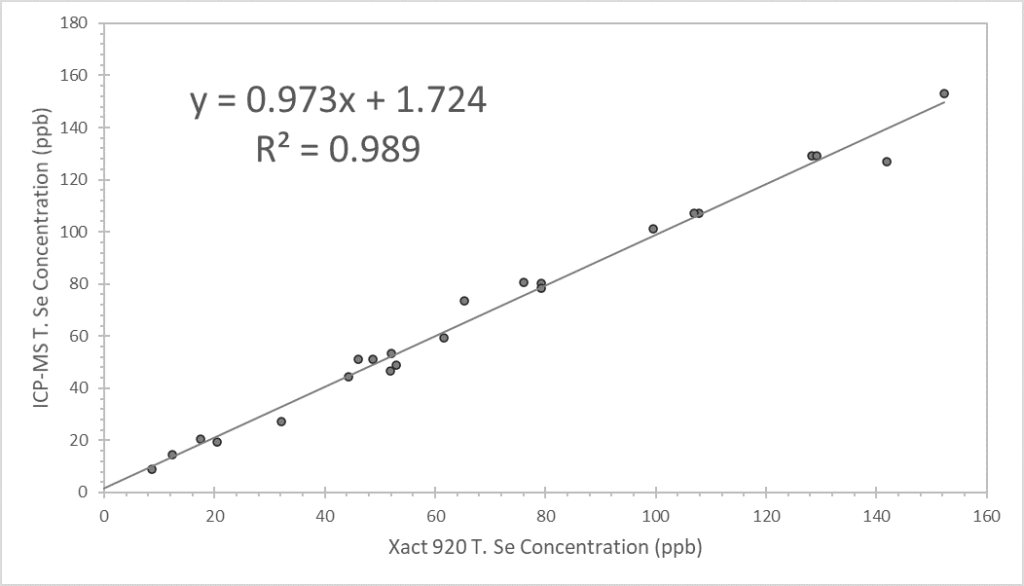The U.S. EPA, under the Clean Water Act, establishes Effluent Limitation Guidelines (ELG). On August 31, 2020 the EPA issued a finalized version to the Stream Electric Power Generating category (40 CFR Part 423). This finalized version added numerical limitations on several pollutants and waste streams. One waste stream of interest is flue gas desulfurization (FGD) wastewater. FGD waste streams received numerical limits on total arsenic (daily = 18 ppb (parts per billion), monthly = 8 ppb), total mercury (daily = 103 ppt (parts per trillion), monthly = 34 ppt), total selenium (daily = 70 ppb, monthly 29 ppb), nitrate/nitrite (daily = 4 ppm (parts per million), monthly = 3 ppm), total suspended solids (daily = 100 ppm, monthly = 30 ppm) and oil and grease (daily = 20 ppm, monthly = 15 ppm). These numerical limits are based on Best Available Technology Economically Achievable (BAT) using chemical precipitation followed by low hydraulic residence time biological reduction.
Electric generating utilities have a broad compliance deadline from as soon as incorporated into permit to December 31, 2028, depending on the specific facility’s sub-category.
This application focuses on measuring total selenium in the FGD waste stream, using Cooper Environmental’s Xact 920, a continuous multi-metal monitor based-on energy dispersive X-ray fluorescence (XRF), as an alternative to typical laboratory methods.
Typical selenium sampling and analysis is conducted by collecting manual grab samples and sending to a laboratory for inductively coupled plasma mass spectrometry (ICP-MS) analysis, utilizing any number of interference reduction methods such as triple quadruple or collision cell techniques. This analysis is expensive, and the plant operator doesn’t receive results for days to weeks, usually after an upset event has already occurred. The Xact 920 provides continuous online results within hours of an event happening, allowing quick adjustments to the treatment process, including adjustments to ferric chloride and bioreactor nutrient dosage.
Data presented in this paper was collected over an eight-month demonstration in 2020, with the Xact 920 installed at a pilot scale FGD wastewater treatment plant, capable of treating up to 50 gpm. The general treatment process included typical Phys/Chem followed by biological treatment and ultrafiltration. The Xact 920 collected samples in a continuous online configuration providing total selenium concentration measurements every hour. Periodic grab samples were collected thoughout the demonstration and sent to a laboratory for total selenium analysis using triple quadruple ICP-MS.
The Xact 920 was configured to sample both the bioreactor effluent (Path A) and the Phys/Chem effluent (bioreactor influent) (Path B), this configuration is show in Figure 1.

The Xact 920’s performance was evaluated for adequate sensitivity (detection limit), sample matrix effects (matrix spike recovery) and overall comparison to laboratory ICP-MS results.
The Xact 920’s 99% confidence level detection limit (DL) for the bioreactor effluent was calculated on four consecutive days and ranged from 1.47 to 3.52 ppb. Table 1 summarizes these DLs and the ELG’s FGD waste stream daily and monthly limits. The Xact 920’s average DL is 27 and 11 times lower than the ELG’s daily and monthly limitations, respectively. This demonstrates the Xact 920 has adequate sensitivity for this application.

The Xact 920’s analysis was evaluated for sample matrix effects using matrix spike recovery analysis. Spike recovery was performed twice on the Phys/Chem effluent and three times on the bioreactor effluent. Spike recoveries were perform using both selenium 6+ and selenium 4+ oxidation states. The average matrix spike recovery was 94%, demonstration little to no matrix effects on the Xact 920’s analysis. For reference the U.S. EPA recommends a spike recovery range of 70% to 130%.

The Xact 920 was compared to laboratory ICP-MS for total selenium in both Phys/Chem effluent and bioreactor effluent over the length of the study, spanning a selenium concentration range from 9 to 150 ppb. The overall average percent error relative to ICP-MS was -1.5% ± 8.4%. Table 3 summarizes the percent error analysis for this study.

The Xact 920 was compared to laboratory ICP-MS using a few different approaches. One approachwas generating a parity plot between the two measurement methods and evaluating the linear regression parameters. Figure 2 is a parity plot of the Xact 920 verse the laboratory ICP-MS reported total selenium concentrations for bioreactor effluent. A slope of 0.973 and coefficient of determination of 0.989 demonstrates excellent absolute agreement across the whole concentration range (9 to 153 ppb), and the low intercept (without blanks and spanning a large concentration range) demonstrations low bias between the two methods.

Another comparison was looking at both the Xact 920 and ICP-MS results over time under different operating conditions within the treatment process. Figure 3 and 4 show total selenium concentration over time during two grab sample events while sampling bioreactor effluent. These charts demonstrate the Xact 920 tracks well with ICP-MS even when treatment processes and selenium concentrations are changed. Blue and red data represent the Xact 920 and ICP-MS results, respectively.


This application demonstrates the Xact 920 can provide accurate, continuous, near real-time total selenium measurements for process control related to the U.S. EPA’s ELG’s for FGD wastewater streams.
For more information about the Xact 920 technology, please contact Krag Petterson at kragp@sci-monitoring-cn.com.


Comments are closed